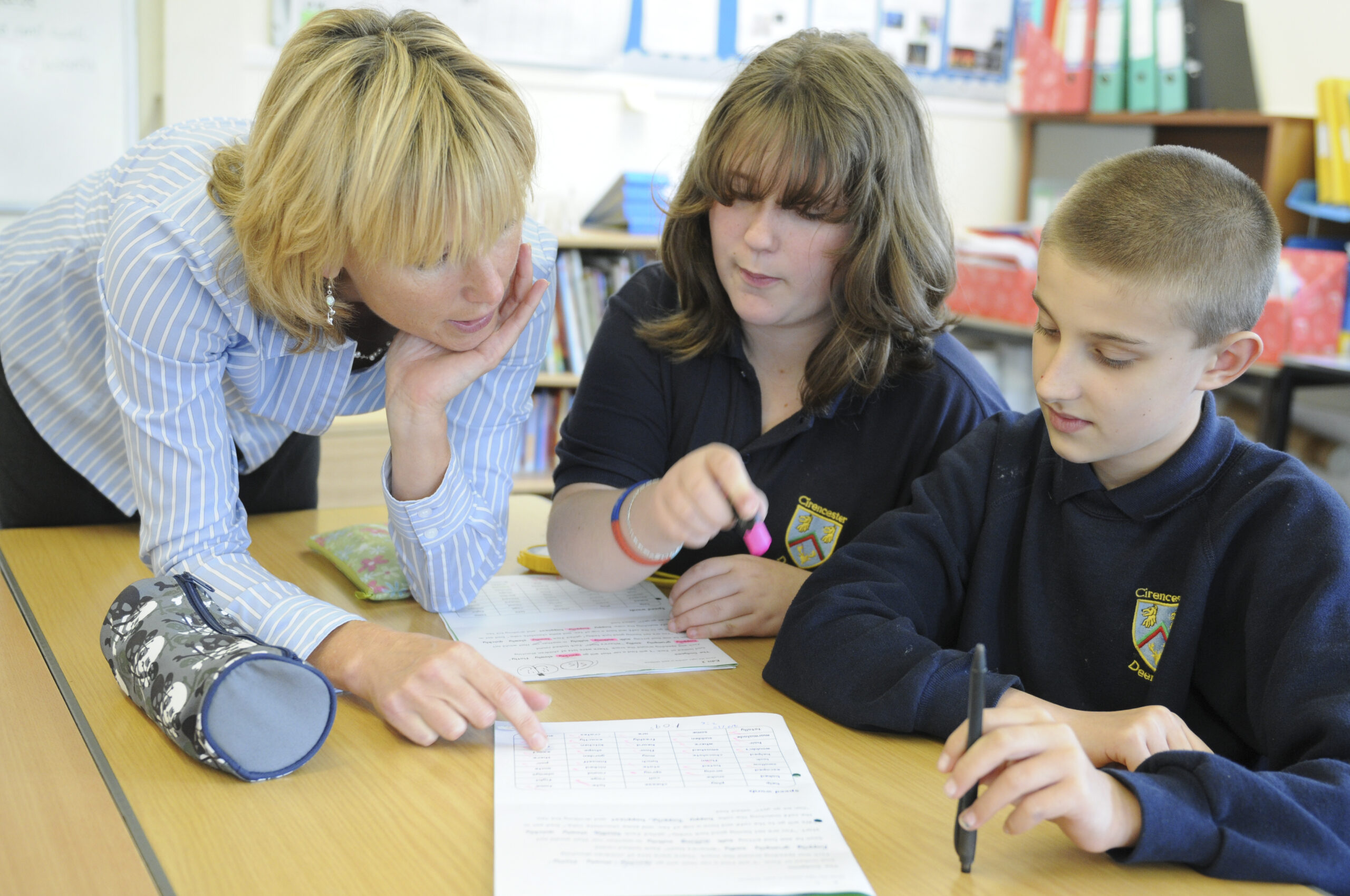“Every teacher is a teacher of reading” – W.S. Gray, education reformer, 1925
Reading well is at the heart of academic success. Students in secondary school are expected to comprehend complex subject texts, and there is a significant correlation between reading ability and GCSE outcomes in all subjects (1). And yet around 25% of children come into secondary school below the expected reading standard which is at the threshold of functional literacy. If students’ reading doesn’t improve, not only will they have weak GCSE outcomes, but they will be among the 16% of adults with very poor literacy, leading to lifelong negative consequences (2). Continue reading for tips on how to support struggling readers in your classroom.
Students who struggle with reading need tailored, effective interventions to meet their individual needs. And yet the vast majority of the time, children will – and should – be in classrooms learning subject content. Gray’s mantra from a century ago is well-understood in principle: ensuring children read effectively is the job of teachers in every discipline and key stage. But what does this mean on a practical level in a classroom with an extensive curriculum to cover? What can busy classroom teachers (already struggling with workload) do to support and develop students who struggle with reading?
Thankfully there are a number of strategies that over time will make a significant difference to reading achievement and student confidence. These can be collected into three areas: reworking planning to consider the needs of struggling readers; developing vocabulary and improving decoding; and using the power of oracy and explanation.
Planning
- Know your students: information about the lowest 20% of readers should be communicated to teachers in an easy-to-access format. For example, if your school uses ePraise or similar, it takes only minutes for the data member of staff to add in an additional indicator for students in the lowest 20%; this information can be used by classroom teachers building seating plans. Struggling readers need to be placed close to the teacher, or next to an empathetic partner.
- Research shows that background knowledge is crucial for reading comprehension (3), so set students up for success by pre-teaching key ideas and essential vocabulary before reading a text. This can be as simple as showing an image, map or short video clip and discussing this as a class. Hint: try using ChatGPT – copy and paste the text you want to use, and then ask for ‘background knowledge needed to understand text’ and ‘key vocabulary in text’.
- Expert readers use pre-, during- and after-reading strategies to comprehend text, so you can plan your lesson using this structure. Try pre-reading anticipation guides, during-reading summarising techniques and after-reading graphic organisers.
Vocabulary and Decoding (phonics)
- Mini-white boards are a power tool for teachers as they reduce stress about spelling, while at the same time showing struggling readers how words are put together, which in turn helps with decoding. Try syllable pyramids; missing letters; or getting students to write the vocabulary word then creating a picture representing what it means.
- Use morphology, which is breaking words into parts (prefix, root, suffix). Learning the meaning of the prefix ‘re’ or the root word ‘micro’ empowers students to try to figure out other words with the same parts.
- The ‘fast, focus, flood’ method is an excellent way to think about vocabulary in the classroom (4). For essential words in a text, use ‘focus’, meaning direct instruction with repeated low-stakes quizzing. For other words, a ‘fast’ explanation is sufficient – give them a synonym or image, and then move on. ‘Flood’ is showing your enthusiasm for words, talking about their nuances, etymologies and power.
Oracy and Explanation
- Read aloud all texts slowly and with expression to ensure full access to the curriculum. You can ask students to track while you read (though very weak readers may not be able to do this). Never ask struggling readers to read aloud in front of the class as it can be mortifying for them. However, if they are with a trusted partner, they might develop fluency by repeated reading aloud of a small section (the more fluent reader goes first).
- Oracy can help to embed key vocabulary, so try ‘I say, we say, you say’. The teacher says the word, students repeat it chorally, then students turn to a partner and say the word individually.
- Students’ reading comprehension improves when they understand metacognitive strategies (5). Explain — and model — how you read differently depending on the task (e.g. scanning to look for specific details; re-reading to understand something difficult); and on the text (e.g. disciplinary literacy meaning that you read a maths problem differently than you read a poem).
By using these easy-to-implement strategies, teachers in all subjects provide Goldilocks-sized scaffolding which can make a substantial impact in students’ reading ability and confidence. When every teacher becomes a teacher of reading, every child – and especially every struggling reader — benefits.
Browse our results-driven reading resources for secondary:
References:
- https://www.gl-assessment.co.uk/press-office/press-releases/new-study-highlights-the-importance-of-reading-to-the-whole-school-curriculum/
- https://literacytrust.org.uk/information/what-is-literacy/
- https://www.tandfonline.com/doi/full/10.1080/02702711.2021.1888348
- http://scira.weebly.com/uploads/2/1/9/9/21997846/flood_fast_focus_2.pdf
- https://journals.sagepub.com/doi/10.1177/2372732218816339

Alice Visser is an Oxfordshire-based Literacy Coordinator, History & English teacher and reading advocate with life/education experience in six countires. Her interests include building a reading culture; developing academic reading; and supporting struggling and reluctant readers. She has a MA in Children’s Literature and has raised five children.
More blogs from the Oxford English team:
- Oxford Smart Quest: A high quality KS3 English curriculum
- KS3 Vocabulary Development with Oxford Smart Quest
- Inspiring awe and wonder at KS3 English and beyond
- Curriculum Implementation at KS3 English
- Classroom strategies to support struggling readers
- Building Coherence in the Oxford Smart Curriculum for English



